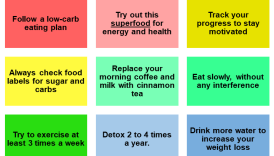Data-Driven Ways to Add Years to Your Healthy Life

Importance of Data-Driven Approaches
In today’s technology-driven world, utilizing data-driven approaches is more critical than ever. Decisions based on qualitative observations alone can lead to misleading conclusions. For instance, a fitness enthusiast might rely solely on how they feel rather than keeping track of vital metrics such as heart rate or sleep patterns. Embracing data helps individuals make informed choices about their health.
- Data-Driven Ways to Add Years to Your Healthy Life
- Importance of Data-Driven Approaches
- Link Between Data and Health
- Understanding Longevity
- Factors Influencing Longevity
- Impact of Healthy Habits on Lifespan
- Using Wearable Technology
- Tracking and Monitoring Health Data
- Implementing Insights for Better Health
- Analyzing Nutritional Data
- Importance of Balanced Diet
- Nutrient-Rich Foods for Longevity
- Exercise and Fitness Metrics
- Incorporating Physical Activity Data
- Tailoring Workouts for Longevity
- Sleep Patterns and Quality
- Monitoring Sleep Data
- Optimizing Sleep for Health
- Stress Management Techniques
- Identifying Stress Triggers
- Techniques for Stress Reduction
- Mental Health and Cognitive Fitness
- Tracking Brain Health Data
- Cognitive Activities for Longevity
- Social Connections and Support
- Quality Relationships and Longevity
- Utilizing Social Data for Health
- Preventive Healthcare Practices
- Screening and Monitoring Health Conditions
- Proactive Steps for Longevity
- Environmental Factors and Health
- Impact of Environment on Lifespan
- Creating Healthy Living Spaces
- XII. Genetic Testing and Personalized Medicine
- Understanding Genetic Data
- Tailored Treatment Approaches for Health
- XIII. Community Support and Resources
- Accessing Health-Related Programs
- Engaging with Supportive Communities
- XIV. Regular Health Check-ups and Monitoring
- Importance of Medical Check-ups
- Utilizing Health Data for Prevention
- XVI. Conclusion
- Summary of Data-Driven Strategies
- Long-Term Benefits of Healthy Living
- It empowers proactive management.
- Enables personalized strategies.
- Boosts overall health outcomes.
Link Between Data and Health
Data plays a pivotal role in understanding and improving health. By analyzing health data, one can reveal trends that affect longevity and wellness. For example, tracking daily activity levels shows how movement impacts energy and mood. Moreover, studies consistently show that individuals who engage with their health data often experience:
- Greater awareness of habits.
- Improved motivation.
- Better adherence to wellness plans.
By integrating data into daily routines, everyone can take meaningful steps towards a healthier lifestyle. The following sections will delve deeper into the various aspects of health influenced by data.
Understanding Longevity
Factors Influencing Longevity
As the conversation about health progresses, understanding longevity becomes essential. Longevity doesn’t solely hinge on genetics; various factors influence how long and how well individuals live. Environmental conditions, lifestyle choices, and socio-economic status all play significant roles. For example, someone living in a supportive community with access to nutritious food and healthcare often enjoys a longer lifespan. Key factors include:
- Genetics: Predisposition to certain diseases.
- Environment: Clean air, safe neighborhoods, and access to nature.
- Social Connections: Supportive relationships enrich our lives.
Impact of Healthy Habits on Lifespan
Healthy habits are the cornerstone of extending both lifespan and healthspan—the period of life spent in good health. Incorporating simple yet effective routines can dramatically improve longevity. Consider this: A friend of mine adopted a daily walking routine. Over time, not only did their physical health improve, but their mental clarity and happiness levels soared. Some positive habits include:
- Regular Exercise: Aiming for at least 150 minutes of moderate activity weekly.
- Balanced Nutrition: Emphasizing whole foods, fruits, and vegetables.
- Mindfulness Practices: Stress reduction techniques that promote mental well-being.
The choices made daily can significantly shape health outcomes, emphasizing the idea that small changes lead to big results over time. Understanding these factors is not just informative but can inspire actionable changes in one’s life.
Using Wearable Technology
Tracking and Monitoring Health Data
With the rise of wearable technology, tracking and monitoring health data has never been easier. Devices like smartwatches and fitness trackers allow individuals to collect valuable information about their daily activities, sleep patterns, and heart rates. I once gifted my sister a fitness tracker, and she was amazed at how much data it provided about her activity levels. Key metrics to monitor include:
- Steps Taken: Encouraging more movement.
- Heart Rate: Understanding fitness levels and stress management.
- Sleep Quality: Identifying patterns affecting overall health.
By consistently tracking these metrics, individuals can gain better insights into their health.
Implementing Insights for Better Health
Once data is collected, the real magic happens when it’s used to inform health decisions. Implementing insights from health data can lead to significant improvements. For example, after analyzing my own data, I discovered I wasn’t getting enough quality sleep. Adjusting my bedtime and establishing a bedtime routine helped me feel more rested. Effective implementations may include:
- Setting Personalized Goals: Whether it’s increasing daily steps or improving sleep duration.
- Adjusting Diets: Recognizing energy dips and making nutritional changes accordingly.
- Finding Motivation: Using alerts and reminders to keep health goals in sight.
Harnessing wearable technology enriches the journey towards better health, making informed decisions accessible and actionable.
Analyzing Nutritional Data
Importance of Balanced Diet
Transitioning from monitoring physical activity to analyzing nutritional data reveals another critical component of longevity: a balanced diet. Nutrition isn’t just about eating; it’s about making mindful choices that nourish both body and mind. I remember a time when I relied on convenience foods due to a busy schedule, but I quickly learned that nourishing meals led to increased energy and better focus throughout my day. A balanced diet includes:
- Fruits and Vegetables: Providing essential vitamins and minerals.
- Whole Grains: Offering sustained energy.
- Lean Proteins: Crucial for muscle repair and growth.
Emphasizing these elements helps create a solid dietary foundation.
Nutrient-Rich Foods for Longevity
When discussing longevity, it’s vital to focus on nutrient-rich foods. These foods not only contribute to a healthy lifestyle but also combat diseases that can shorten lifespan. After incorporating more whole foods into my diet, I’ve noticed improved digestion and overall well-being. Some powerhouse foods include:
- Leafy Greens: Spinach and kale are loaded with antioxidants.
- Berries: High in vitamins and anti-inflammatory properties.
- Nuts and Seeds: Provide healthy fats and protein.
Integrating these nutrient-dense options into daily meals can drastically improve overall health, making them essential choices for anyone looking to enhance their longevity journey.
Exercise and Fitness Metrics
Incorporating Physical Activity Data
Building on the foundation of nutrition, exercise is another cornerstone of a healthy lifestyle and significantly contributes to longevity. By incorporating physical activity data into daily routines, individuals gain insights that can enhance their fitness journeys. I once started tracking my workouts, and the results were eye-opening—I could see which exercises boosted my mood and energy levels. To effectively incorporate this data, consider monitoring:
- Daily Steps: Aim for a minimum of 10,000 steps.
- Workout Duration: Track frequency and time spent on each session.
- Heart Rate Zones: Ensure workouts challenge your cardiovascular system.
By understanding these metrics, individuals can better align their goals with their fitness routines.
Tailoring Workouts for Longevity
Tailoring workouts based on fitness metrics is a powerful strategy for promoting longevity. For instance, after analyzing my physical activity data, I recognized a need to diversify my routine to avoid plateaus. Incorporating strength training along with cardiovascular exercises allowed me to increase muscle mass and improve endurance. Consider these tips for tailored workouts:
- Mix Cardio and Strength Training: Aim for a balanced routine.
- Include Flexibility Exercises: Such as yoga or stretching to enhance mobility.
- Listen to Your Body: Adjust workouts based on energy levels and recovery needs.
By customizing exercise plans based on personal data, everyone can create an effective and enjoyable fitness routine that supports long-term health and vitality.
Sleep Patterns and Quality
Monitoring Sleep Data
As we continue to explore health metrics for longevity, sleep quality is a vital area that often goes overlooked. Monitoring sleep data can unlock insights into how well we rest each night. For example, after tracking my sleep patterns for a month, I discovered I was getting less REM sleep than recommended, leading to sluggish mornings. Key metrics to monitor include:
- Sleep Duration: Aim for 7-9 hours per night.
- Sleep Cycles: Understanding how many complete cycles you complete can indicate sleep quality.
- Sleep Interruptions: Note any awakenings throughout the night.
With these insights, individuals can take steps toward improving their rest.
Optimizing Sleep for Health
Optimizing sleep is essential for overall health and well-being. After realizing how fragmented my sleep was, I adopted several strategies to enhance my rest. Creating a nighttime routine helped me wind down and fall into a deeper sleep more easily. Here are some effective habits to consider:
- Establish a Consistent Sleep Schedule: Go to bed and wake up at the same time every day.
- Create a Sleep-Conducive Environment: Keep the bedroom dark, cool, and quiet.
- Limit Screen Time Before Bed: Aim to turn off electronic devices at least an hour before sleep.
By adopting these practices, individuals can significantly improve their sleep quality, supporting not just daily productivity but long-term health and longevity.
Stress Management Techniques
Identifying Stress Triggers
Transitioning from sleep quality to stress management reveals another crucial element that affects longevity. Identifying stress triggers is the first step toward managing anxiety effectively. For instance, I initially found that my stress levels soared during work deadlines. Once I pinpointed the specific situations causing this pressure, I felt more equipped to address them directly. Common stress triggers can include:
- Work Pressure: Tight deadlines or challenging tasks.
- Personal Relationships: Conflicts or misunderstandings with loved ones.
- Significant Life Changes: Events such as moving or changing jobs.
By understanding these sources, individuals can take proactive steps to mitigate stress.
Techniques for Stress Reduction
Once stress triggers are identified, employing effective reduction techniques becomes essential. I’ve personally found that incorporating mindfulness into my daily routine significantly reduced my stress levels. Simple practices can make a huge difference. Consider these stress reduction techniques:
- Deep Breathing Exercises: Take a few minutes to focus on inhaling and exhaling deeply.
- Physical Activity: Engaging in regular exercise can serve as a natural mood booster.
- Mindfulness and Meditation: Spending even a few minutes meditating can create a sense of calm.
By implementing these strategies, individuals can effectively manage stress, creating a healthier, more balanced life that supports long-lasting well-being.
Mental Health and Cognitive Fitness
Tracking Brain Health Data
As we shift focus to mental health and cognitive fitness, it’s crucial to recognize that just as we track our physical health, monitoring brain health data is equally important. Utilizing apps to assess mood patterns and cognitive performance has been a game-changer for me. After keeping a journal of my mood and productivity levels, I discovered triggers that affected my mental clarity. Key data points to track include:
- Mood Fluctuations: Noting days of heightened stress or joy.
- Memory Exercises: Engaging with brain games to assess cognitive function.
- Sleep and Rest Patterns: Understanding how these impact mental agility.
Being mindful of this data empowers individuals to make informed choices about their mental well-being.
Cognitive Activities for Longevity
Engaging in specific cognitive activities can significantly enhance mental endurance and longevity. After incorporating puzzles and reading into my routine, I felt a noticeable boost in concentration and overall happiness. Here are some effective cognitive activities to consider:
- Brain Games: Engage regularly with puzzles, crosswords, or Sudoku.
- Learning a New Skill: Whether it’s knitting or a new language, challenging the brain keeps it sharp.
- Social Engagement: Regularly interacting with others sparks cognitive function and emotional health.
By embracing these activities, individuals can support their mental health and cognitive fitness, creating a strong foundation for a longer, healthier life.
Social Connections and Support
Quality Relationships and Longevity
Moving from cognitive fitness to social connections highlights a powerful factor in promoting longevity—quality relationships. Numerous studies suggest that individuals with strong social bonds tend to live longer, healthier lives. Reflecting on my own experiences, I’ve found that spending time with my friends and family not only lifts my spirits but also enhances my resilience during challenging times. Key aspects of quality relationships include:
- Emotional Support: A network that offers encouragement during tough times.
- Shared Experiences: Creating lasting memories together that boost happiness.
- Communication: Open and honest interactions that strengthen bonds.
Nurturing these connections can significantly impact overall health and longevity.
Utilizing Social Data for Health
Utilizing social data can enhance the way we engage with our relationships for better health outcomes. Tracking interactions through apps or journaling can reveal patterns in how social engagement affects mood and well-being. I often note how my energy levels rise after spending time with loved ones, which has encouraged me to prioritize these interactions further. Consider these tips for leveraging social data:
- Assess Interaction Frequency: How often do you connect with friends and family?
- Evaluate Relationship Quality: Reflect on the emotions tied to these interactions.
- Set Social Goals: Aim to engage with someone new each week or reconnect with an old friend.
By actively managing social connections, individuals can cultivate a supportive network, ultimately contributing to enhanced health and longevity.
Preventive Healthcare Practices
Screening and Monitoring Health Conditions
Building on the importance of social connections, preventive healthcare practices play a critical role in maintaining health and enhancing longevity. Regular screening and monitoring of health conditions can catch potential issues before they escalate. For instance, after an annual check-up, I learned that my cholesterol levels were slightly elevated. Early detection allowed me to make necessary dietary changes and avoid more serious health problems down the line. Key screenings to consider include:
- Blood Pressure Checks: Monitoring regularly can help prevent heart disease.
- Lipid Panels: Assessing cholesterol levels as part of routine blood work.
- Cancer Screenings: Such as mammograms or colonoscopies, based on age and risk factors.
Being proactive about these screenings encourages informed decision-making regarding health.
Proactive Steps for Longevity
Taking proactive steps goes beyond screenings and involves lifestyle adjustments that promote longevity. I began incorporating regular check-ups into my annual schedule, emphasizing the importance of staying informed about my health status. Consider these proactive measures:
- Stay Active: Aim for at least 30 minutes of exercise most days.
- Healthy Eating: Prioritize a diet rich in fruits, vegetables, and whole grains.
- Mental Health Check-ins: Regularly evaluate emotional well-being through mindfulness or therapy.
By embracing preventive healthcare practices and proactive measures, individuals can significantly enhance their quality of life and lifespan, laying a strong foundation for long-term health.
Environmental Factors and Health
Impact of Environment on Lifespan
As we delve into environmental factors, it’s essential to recognize how our surroundings significantly impact longevity and overall health. Studies have shown that individuals living in areas with clean air, access to green spaces, and low pollution levels tend to enjoy longer lives. Personally, I experienced a change when I relocated to a neighborhood with plenty of parks and walking trails. I felt an immediate boost in my physical and mental well-being. Key environmental factors affecting health include:
- Air Quality: Clean air correlates with lower rates of respiratory diseases.
- Green Spaces: Access to parks can enhance physical activity and mental relaxation.
- Noise Pollution: Less exposure to noise leads to better sleep and lower stress levels.
These factors collectively contribute to a healthier lifestyle.
Creating Healthy Living Spaces
Creating healthy living spaces is a proactive way to enhance personal well-being and longevity. After learning about environmental impacts, I took steps to improve my home environment by incorporating more plants and ensuring good ventilation, which helped purify the air and elevate my mood. Consider the following tips for creating a healthy living space:
- Incorporate Plants: Adding greenery can improve air quality and reduce stress.
- Optimize Natural Light: Maximize sunlight exposure, which boosts mood and vitamin D levels.
- Declutter Regularly: A tidy living space promotes a sense of calm and order.
By focusing on environmental factors and making conscious choices in our living spaces, we can foster healthier habits and enhance our chances for a longer, fulfilling life.
XII. Genetic Testing and Personalized Medicine
Understanding Genetic Data
Transitioning from the broader environmental factors, we now turn our focus to the intriguing world of genetic testing and personalized medicine. Understanding genetic data has become increasingly accessible, offering insights into an individual’s predisposition to certain health conditions. After undergoing a genetic test, I discovered that I carry a mutation associated with elevated cholesterol levels. This information empowered me to adapt my lifestyle to mitigate potential health risks. Key aspects of genetic data include:
- Disease Predispositions: Identifying risks for conditions like heart disease and diabetes.
- Pharmacogenomics: Understanding how genetics affect responses to medications.
- Ancestry Insights: Offering a broader understanding of one’s heritage.
These elements make genetic testing a valuable tool for informed health choices.
Tailored Treatment Approaches for Health
Following the insights gained from genetic data, tailored treatment approaches have emerged as a powerful strategy in healthcare. After learning about my genetic profile, I consulted with a healthcare professional who helped develop a personalized health plan. This plan included specific dietary recommendations and a tailored fitness regime designed to reduce my risk of heart disease. Consider these tailored approaches to health:
- Customized Nutrition Plans: Adjust diets based on genetic predispositions.
- Focused Exercise Programs: Develop fitness routines that account for individual risk factors.
- Targeted Screening Schedules: Schedule tests based on genetic risks to catch issues early.
By embracing personalized medicine, individuals can proactively manage their health, leading to improved outcomes and longevity. Investing time in understanding one’s genetic makeup paves the way for healthier, more informed living.
XIII. Community Support and Resources
Accessing Health-Related Programs
Building on the insights from genetic testing and personalized medicine, tapping into community support and resources is essential for fostering a healthy lifestyle. Many communities offer health-related programs that empower individuals to prioritize their well-being. For instance, after joining a local fitness program, I met like-minded individuals who encouraged me to stay active and share health tips. Key programs to explore include:
- Local Health Workshops: Providing education on nutrition, fitness, and mental health.
- Support Groups: Creating safe spaces for people dealing with specific health challenges.
- Community Fitness Classes: Offering activities like yoga, Zumba, or martial arts.
These programs are invaluable for communal support in health journeys.
Engaging with Supportive Communities
Engaging with supportive communities not only provides motivation but also fosters accountability in maintaining health goals. Participating in online forums or local meetups can connect individuals with those who share common health interests. I found that being part of a walking group not only made exercising more enjoyable but also helped me forge lasting friendships. Consider these ways to engage:
- Online Health Communities: Platforms where you can share experiences and gain support.
- Volunteering: Joining health-related initiatives that promote wellness.
- Health Challenges: Participating in community competitions to boost motivation.
By embracing community resources and support, individuals can cultivate an environment conducive to health and longevity. Community engagement enriches our lives, reminding us that we are not alone on this journey to better health.
XIV. Regular Health Check-ups and Monitoring
Importance of Medical Check-ups
Transitioning from community support to individual health practices, regular health check-ups are crucial for maintaining well-being and preventing serious health issues. Many people, like myself, often overlook the importance of these appointments until a concerning symptom arises. After committing to annual check-ups, I discovered valuable information about my health that I would have otherwise missed, such as slight variations in blood pressure. Key benefits of regular check-ups include:
- Early Detection: Catching potential health issues before they escalate.
- Monitoring Chronic Conditions: Ensuring that existing health conditions are well-managed.
- Building a Doctor-Patient Relationship: Familiarity with your healthcare provider enhances communication.
These visits are instrumental to fostering long-term health.
Utilizing Health Data for Prevention
Utilizing health data gathered from check-ups can further enhance personal health management and preventive strategies. Keeping track of key metrics, like cholesterol levels or blood pressure, provides insight into health trends. For instance, by reviewing my past health data, I noticed a gradual increase in cholesterol, prompting me to make immediate dietary adjustments. To leverage health data effectively:
- Maintain an Up-to-Date Health Record: Document test results and changes over time.
- Set Health Goals: Use data to create personalized targets related to weight, fitness, or nutrition.
- Follow Up on Recommendations: Consistently act on suggestions from healthcare providers based on your data.
By embracing regular check-ups and utilizing health data proactively, individuals can take significant strides toward a healthier, longer life. Monitoring health not only empowers informed decisions but also fosters a deeper connection with one’s own well-being.
XVI. Conclusion
Summary of Data-Driven Strategies
As we wrap up our exploration of health and longevity, it’s clear that embracing data-driven strategies is essential for fostering a healthier life. Throughout this journey, we’ve discussed the importance of monitoring various health metrics—be it sleep, nutrition, or physical activity—which can empower individuals to make informed choices. Personally, adopting these strategies has transformed my approach to wellness, allowing me to set specific goals and track my progress effectively. Key data-driven strategies include:
- Regular Health Check-ups: Ensuring timely detection of health issues.
- Utilizing Wearable Technology: Tracking fitness and health metrics for better insights.
- Engaging with Supportive Communities: Building connections that foster accountability.
Long-Term Benefits of Healthy Living
The long-term benefits of committing to healthy living are profound. Not only do these practices enhance physical health, but they also significantly improve mental well-being. Reflecting on my own path, I can attest to the vitality that comes from integrating balanced nutrition, regular exercise, and strong social connections into my daily routine. Consider these enduring benefits:
- Increased Longevity: A healthier lifestyle contributes to a longer life expectancy.
- Improved Quality of Life: Enjoying daily activities with vigor and energy.
- Greater Resilience: Building a solid foundation for coping with life’s challenges.
In conclusion, investing time and energy in data-driven health strategies paves the way for a fulfilling, energetic, and extended life. The journey towards wellness not only enriches personal experiences but also fosters a vibrant community dedicated to health and longevity.





